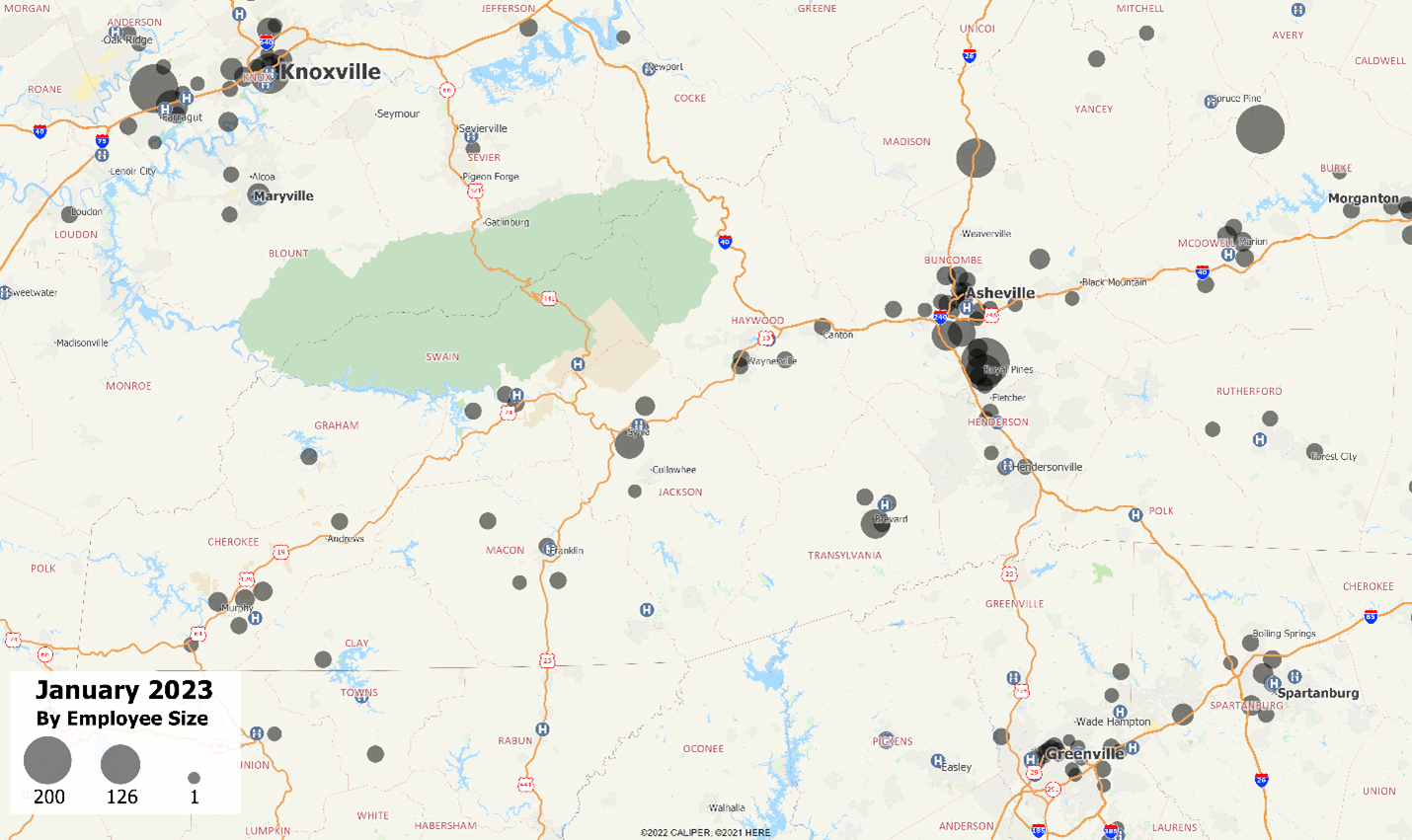The spatial pattern of health care delivery has long been dominated by the clustering of services around hospitals. Most specialist care can be found there, in groups of medical offices in the surrounding area. While general practitioners tend to be more spatially dispersed, accessibility to health care services has long been an issue in many areas, especially in smaller towns which do not have a local hospital.
One of the more important developments in health care delivery over the past two decades has been the rise of the 24/7 emergency clinic. The premise is that much of the hospital ER traffic can be handled by smaller and less expensive clinics which are open nights and weekends. The parents with a feverish child can avoid the cost and wait at the hospital ER by going to a nearby clinic, lowering overall health care costs and allowing hospital ER units to focus on the more serious cases. Millennials and Gen Z also frequently use these urgent care facilities in lieu of primary care physicians.
With emergency rooms swamped during the pandemic, the proliferation of these facilities provided a key relief valve on the medical system.
Using our Business Counts database, we compared establishment and employment for Ambulatory Health Care Services, which were the fastest growing of our 104 groups that we track in our major NAICS categorization. Over the period January 2020 to January 2023, the number of establishments increased from 6,091 to 16,740 nationwide, with employment growing from 92,442 to 309,192. While much of the growth has been in urban counties led by Miami, New York, and Philadelphia, in some states like North Carolina such clinics are being opened in many smaller towns.

We were particularly interested in the spread of these establishments into non-urban areas – the maps below show the size and location of facilities in western North Carolina, east Tennessee, and western South Carolina:

New and large centers have opened in Asheville, Knoxville, and Greenville, but significantly, have also appeared in many small towns which are not served by a local hospital.
The expansion of the 24/7 clinic shows no signs of slowing down, and over the next few years, we would expect to see many small towns across the country have better access to emergency and off-hours medical services.


Recent Comments